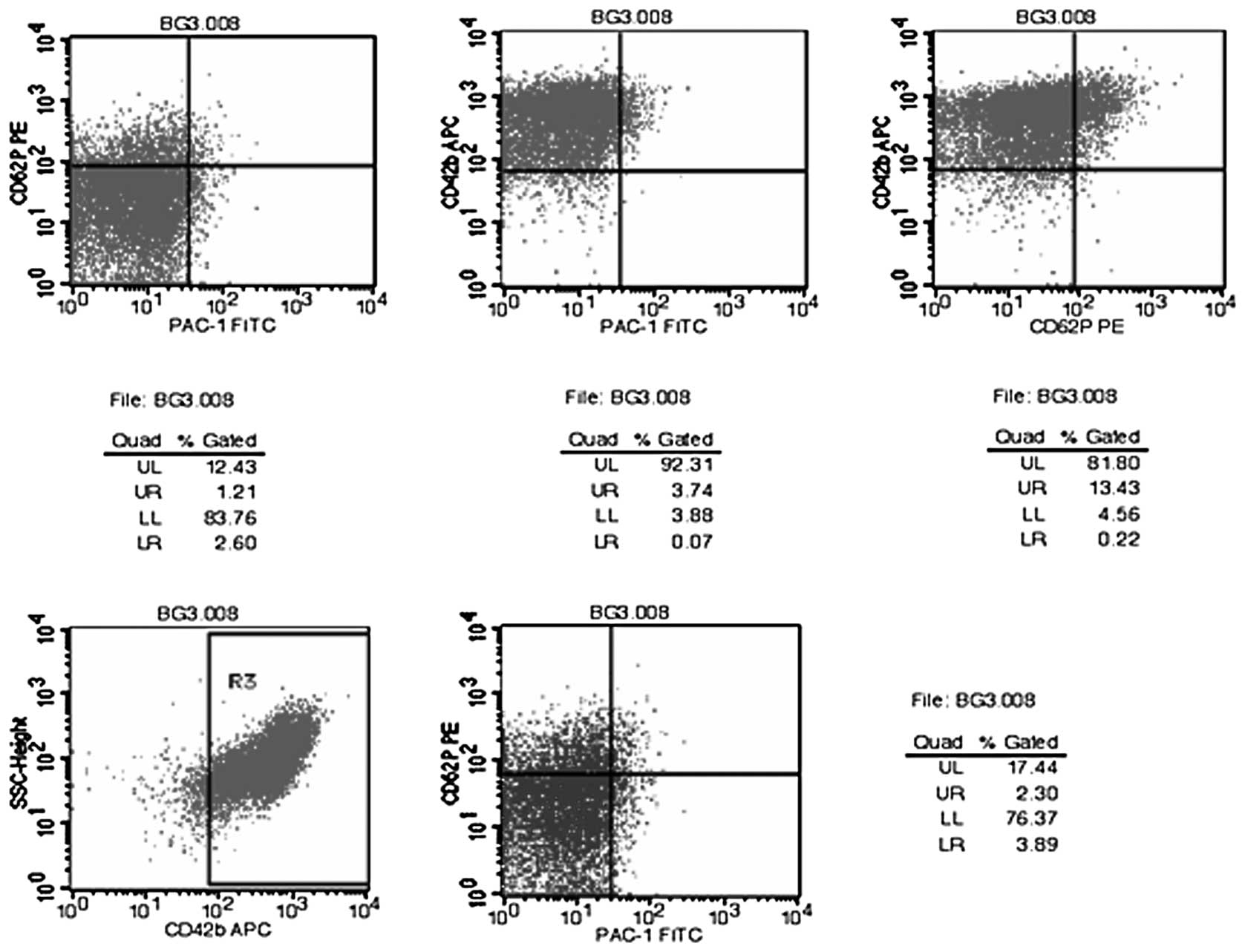Inhibitory role of S‑nitrosoglutathione in the aggregation of frozen platelets, and its effect on the expression of membrane glycoproteins
- Authors:
- Published online on: July 12, 2013 https://doi.org/10.3892/etm.2013.1221
- Pages: 831-839
Metrics:
Total
Views: 0 (Spandidos Publications: | PMC Statistics:
)
Total PDF Downloads: 0 (Spandidos Publications: | PMC Statistics:
)
Abstract
The aim of this study was to explore the effects of S‑nitrosoglutathione (GSNO) on the aggregation of frozen platelets, the platelet nitric oxide (NO) content and the expression of membrane glycoproteins. The level of frozen platelet aggregation was measured using a platelet aggregation analyzer, while the content of NO was measured by the nitrate reductase method and the expression of frozen platelet membrane glycoproteins was determined by flow cytometry. The level of frozen platelet aggregation was reduced from 35.47±2.93 to 24.43±3.07% following treatment with GSNO. The mean NO concentration in the 32 samples of frozen platelets treated with GSNO was 45.64±6.31 µmol/l, which was significantly higher compared with the concentration in the fresh liquid platelet group. There were no significant differences in the levels of PAC‑1 in the fresh liquid platelet, frozen platelet and GSNO-treated frozen platelet groups; by contrast, significant differences were observed in the CD42b and CD62P levels. The platelet membrane glycoprotein expression levels in the frozen platelet and the GSNO‑treated frozen platelet groups were not significantly different. The results of the study indicate that GSNO has potential as a cryoprotectant, due to its ability to increase the NO concentration in frozen platelets, inhibit platelet aggregation and maintain platelet function. It is likely that the molecular arrangement and structure of the frozen platelets were altered following GSNO treatment, or that the frozen platelets were affected by alternative mechanisms.












